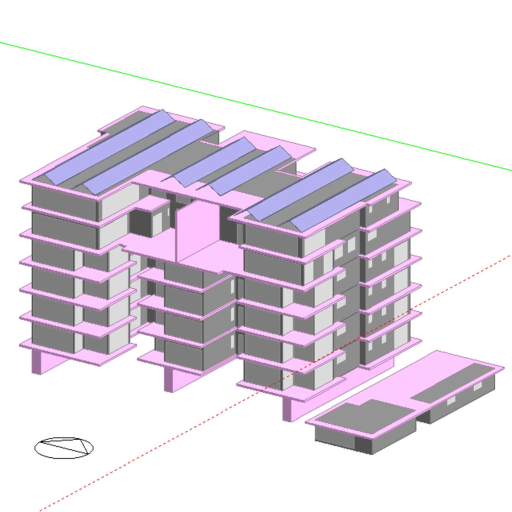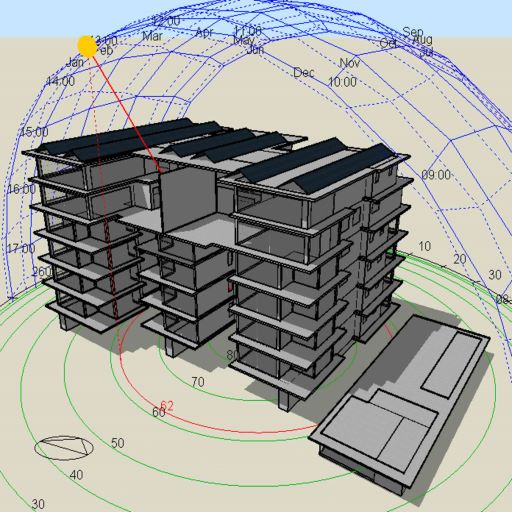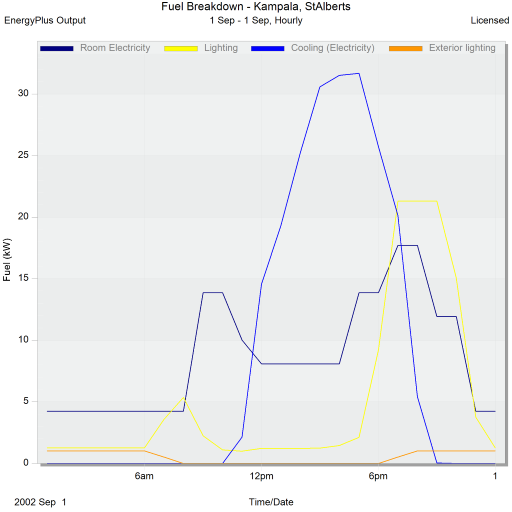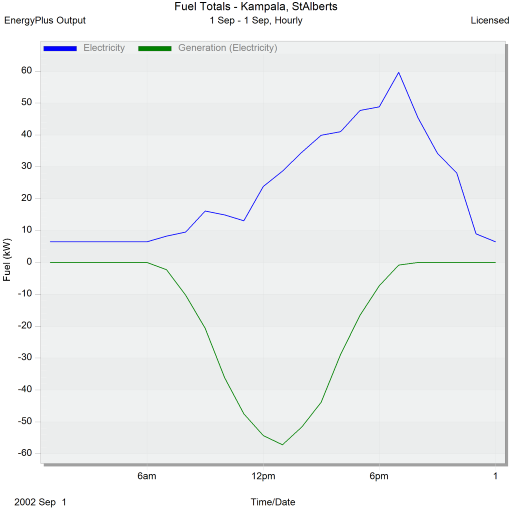Case Studies > LEED
Energy Performance and Photovoltaic (PV) System Analysis of a LEED-Certified Building
| About | Residential apartment building, 3,600 m², working towards LEED Gold Certification, | 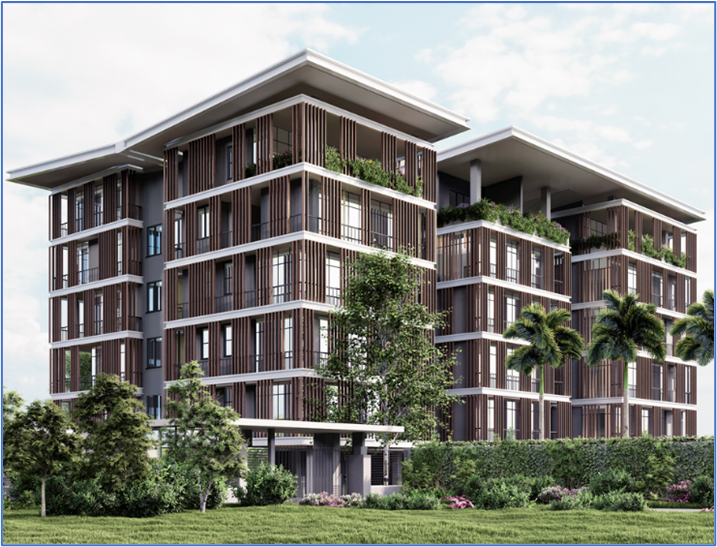 |
| By | Eren Bastanoglu, Building Energy Modeler, Green Building Consultant | |
| Location | Kampala, Uganda. | |
| Category | LEED Certification, Renewable Energy, ASHRAE 90.1 | |
| Highlights |
|
St. Albert’s Place is one of the first projects in Uganda to work towards LEED Gold Certification for sustainable design & engineering. It includes 11 luxury apartments set within the residential area of Mbuya in Uganda’s capital city, Kampala, and it totals 3,600 m² floor area. The design is completed and at the time of writing (March 2023) the building is under construction.
Considering that energy efficiency is the most important requirement in LEED certification with the highest number of points, the project aims to achieve all points in the Optimize Energy Performance and Renewable Energy Production credits to successfully meet the LEED Gold threshold.
In order to achieve increased energy performance, the project adopts the strategy of applying a robust set of energy efficiency measures that are beyond current codes and standards. This will result in lower energy use intensity (EUI) that can then be met with on-site renewable generation. In this regard, the focus is on increasing energy efficiency and minimizing waste before producing more energy.
DesignBuilder Energy Model
The ASHRAE 90.1 2010 Appendix G Performance Rating Method (PRM) was applied in the energy model per the LEED v4 requirements. The detailed energy performance assessment was carried out through the use of DesignBuilder, which has all the capabilities described in G2 Simulation General Requirements in Appendix G of ASHRAE 90.1 2010.
The energy profile of the building indicates that cooling, interior lighting, appliances, and domestic water heating are the main energy consumers in the building. Therefore, the following energy efficiency measures listed below have been incorporated into the design:
- Extensive shading devices are added to reduce the solar heat gains in Uganda’s hot climate.
- The design includes large operable windows on all facades of the dwelling units that can provide cross ventilation. Natural ventilation helps to cool the building in the evenings when the outdoor temperature is lower than indoors, providing free cooling as part of the “concurrent” mixed-mode strategy.
- Bathroom exhaust fans are utilized to maintain indoor air quality per ASHRAE 62.1 standard.
- Windows with low solar coefficients are selected to reduce cooling loads.
- A+++ rated home appliances are installed in the dwelling units.
- LED lamps and multiple controls are provided to increase lighting efficiency.
- Split type inverter air conditioning units are used for cooling.
- Solar water heaters are installed on the roof to supply the entire hot water demand.
|
|
|
Ventilation and Passive Cooling
Mandatory mechanical ventilation is provided through continuous exhaust fans, to meet the requirements of ASHRAE 62.1.
Passive cooling through natural ventilation is modeled using DesignBuilder’s “Scheduled” natural ventilation option to provide 5 ac/h to cool the building only when needed during periods when the outside air temperature is cooler than the temperature inside. The 5 ac/h natural ventilation flow rate is considered to be easily achievable given the cross-ventilation design strategy used. A cooling setpoint temperature of 25.8degC was used.
The graph below shows the variation of inside and outside dry-bulb temperatures for a sample day along with ventilation for one of the units. Note that the external ventilation and cooling system are active together in the evening and also for a short time in the morning, providing concurrent mixed-mode cooling.
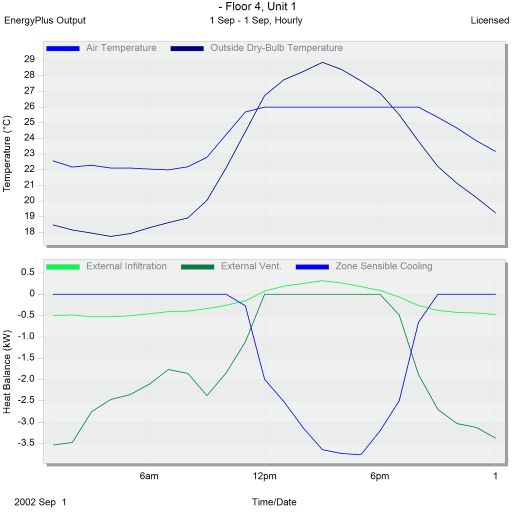
Mixed mode ventilation performance
Photovoltaic Panel Analysis
Different PV system scenarios were analyzed in DesignBuilder to examine their impact on LEED Points eligibility for the “Optimize Energy Performance and Renewable Energy Production” credits. The PV array size, the configuration of the panels, and the capacity of the energy storage were the main parameters taken into account in the analysis.
Kampala is located on the equator and therefore there is no need to tilt the panels towards the south as is typically done in the northern hemisphere. Photovoltaic energy production starts at sunrise and reaches its maximum at midday as shown in the righthand graph below (green line). However, the energy consumption in the building peaks in the evening (blue line) because of higher cooling loads and occupancy patterns.
|
|
|
As seen in the above right graph, excess electricity is generated at midday, yet the region is not equipped with the infrastructure to enable excess generated energy to be fed back to the grid. To help make best use of the PV solar energy, the design team decided to install a battery that will store excess PV electrical energy until it is required in the evening. Additionally, to increase the energy generation in the mornings and afternoons when the building electricity demand is at its highest, the team decided to tilt the PV panels to the east and west instead of a horizontal configuration. See the model images below.
 Horizontal Panels |
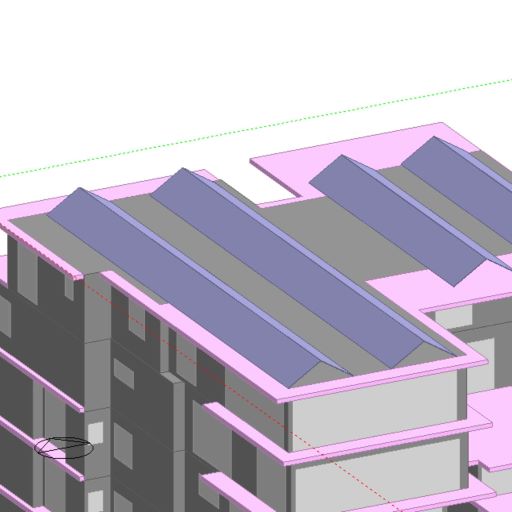 East-West Panels |
Analysis of the PV simulation results shows that the east-west panels have slightly lower total energy production over the day but that energy is more evenly spread out providing more energy in the morning and evening when it is needed. The positioning of the panels allows the project to opt for a lower-capacity battery, helping to reduce the cost of the generation system. The size of the panels was determined according to the available roof area and the building peak demand for renewable energy.
LEED Certification Performance
The detailed analysis shows that the simulated site energy use intensity for the Proposed model is 49.95 kWh/m². The proposed design performs 38.4% better than the ASHRAE 90.1 Baseline case without the photovoltaic panels and achieves 13 points in LEED Optimize Energy Performance credit.
The use of DesignBuilder allowed the team to optimise not only the different orientations and capacities of the PV system but also the energy storage options. The project team decided to install 80 kWp of 45° east-west photovoltaic panels and a 100 kWh battery to store the excess energy. Results show that 80 kWp panels produce 121,014 kWh of electricity which covers 65% of the annual energy consumption.
With the inclusion of the PV panels, the project performs 75% better than the ASHRAE 90.1 baseline and achieves the maximum of 21 credits in the LEED Energy Optimize Credit and Renewable Energy Product categories.
 |
About the author Eren Bastanoglu is a green building consultant specializing in LEED certification and energy modeling. As a civil engineer with a master’s degree focused on green buildings, Eren is a LEED Accredited Professional and Building Energy Modeling Professional (BEMP). He has been working as a green building consultant since 2011 and completed projects in various countries, including but not limited to the USA, Japan, Israel, and Turkey. Eren’s LEED projects have a total of 5 million square feet of building area and seven of them are certified as LEED Platinum. Eren provides comprehensive green building consultancy and energy modeling services with his specialized knowledge and years of hands-on experience. He actively cooperates with international clients and provides remote services by maximizing communication and efficiency. Contact: eren@ecomeks.comwww.linkedin.com/in/eren-bastanoglu |

